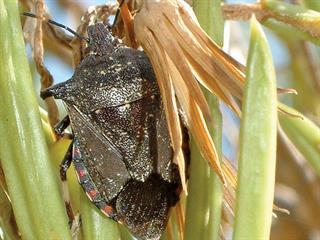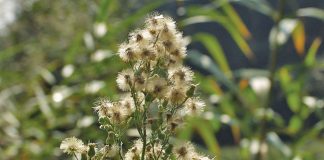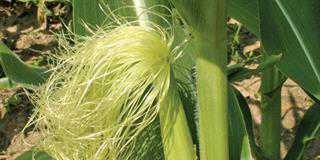
Sorghum is a widely grown crop that prefers hot, dry conditions, making it easy to cultivate, so it’s often grown in preference to maize and processed for both human and livestock consumption.
It is a cheap food source, so it is grown on a commercial scale as well as at subsistence level. This makes the control of natural pests and weeds important, as many people who grow the crop have limited financial resources.
Many pests prey on sorghum: aphids, beetles, weevils, caterpillars, locusts, flies, grasshoppers and spider mites, amongst others. As each pest feeds on its own particular area of the plant, the plant is vulnerable to attack at all stages of development, from seedling to harvest.
Less obvious
Cutworms, aphids, spider mites, locusts and other pests attack sorghum during its growing phase. Many of these early invaders reduce the plant’s ability to grow properly by taking away vital nutrients, giving rise to withered, stunted plants useless to the farmer. Even at the point of harvest, the crop is not safe: the mature grain heads are susceptible to attack from seed bugs and shield bugs.
The less obvious subterranean pests include insect larvae. These bore into the roots, and treating them is difficult because the first indication of their presence is a very sick plant. Ideally, control should be about prevention. If weather conditions allow, consider planting slightly earlier in the season when many of these pests have not yet developed. Ploughing the soil early and then leaving it will expose pests to natural predators such as birds.
Management plan
When I deal with sorghum pests, I first assess what pests are present, in what numbers, and the damage they do to the plant at that time. I can then look for the best management plan. I use many approaches, depending on the pest. These include Nucleopolyhedrovirus (NPV), growth regulators, botanical insecticides such as Neem oil, Pyrethrum and Pongam, fungal pathogens, species- specific pathogens (the latter has been used to control locusts) and pheromone traps. Your choice of botanical insecticides or chemical insecticides will depend on the type of pest.
Bio-pest control
A further option is bio-pest control. This can be highly effective at almost all levels of the plant development. For example, the sorghum midge can be successfully managed by a number of parasitoid wasps, while larger pests will attract the attention of assassin bugs, bee flies, spiders, tachinid flies and the predatory larvae of lacewings and hoverflies. In areas with a high pest presence, either crop rotation with a non-related species, or planting resistant hybrids have proven their worth where sorghum midge is a problem.













